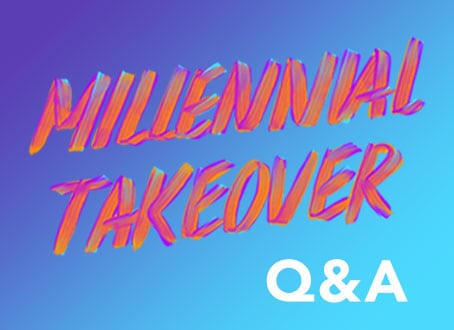Democratizing philanthropy. Isn’t that a simply wonderful concept? The notion that giving—of your time, talent or treasure—isn’t something just for an elite class of individuals, but for all individuals. That the idea of an “every person” giver and “every day changemaker” has the potential to accelerate social impact. At the Case Foundation, as we celebrate 20 years of changemaking, this very idea has been at the core of our approach. Our anniversary call to action to Get in The Arena is a call to everyone, everywhere to engage as a community of social change agents in any way you can.
From early experiments testing the power of technology to drive more financial donations to social causes, to creating alliances of private-public partners to drive talent and time donations to the nonprofit sector, we’ve been pushing against the status quo of what it means to be a “philanthropist” and how to maximize resources to improve the social condition.
So we were thrilled to see the Giving USA 2017 Report find that charitable donations from America’s individuals, estates, foundations and corporations increased to an estimated $390.05 billion in 2016. That represents a 3.5 percent increase in foundation giving from 2015, a 3.5 percent increase in corporate giving and a 3.9 percent increase in individual giving! And how about this fun fact as evidence that individual giving is democratizing philanthropy—more people give than vote.
Against that history and mission, it was such a pleasure to explore trends in “microgiving”—the opportunity for more individuals to give with small donations—with the Carnegie Medal of Philanthropy for a piece on how, with time and technology, more people are turning into philanthropists.
Expanding on what I was able to share in that article, here are my thoughts on four trends that are driving that movement and catalyzing the democratization of philanthropy.
Trend #1: Going mobile and frictionless
In order to truly make giving ubiquitous, donating must be frictionless and easy for people. This quote from Aaron Strout at W20 Group sums it up for me: “The new “Holy Grail” for any business should be to make it as easy as possible for any customer to buy a product or service whenever and wherever they like, with as few clicks as possible. With the evolution of location-based technologies, mobile payment systems and a continual decrease in technology costs, this concept of true ‘frictionless commerce’ is quickly becoming a reality.” And the “business” of giving is no exception. In 2016, online giving increased by almost eight percent, and 17 percent of all online donations came through mobile. I see this trend only growing.
Why? In part because of who is driving online giving: Millennials. The Case Foundation sponsored Millennial Impact Report found that 84 percent of Millennials made donations in 2016. Blackbaud’s Next Generation of American Giving report also found that 62 percent of Millennials expressed interest in making donations on their phones. With Millennials surpassing Baby Boomers as America’s largest generation, their habits and preferences will inevitably drive the future of philanthropy.
We’re also seeing a surge of entrepreneurship and innovation in online platforms aimed at maximizing a seamless experience for users. Check out platforms like Goodworld, on a mission to make it easy to donate in the moment by using a hashtag on social media, or Spotfund or Google’s One Today, all aimed at easing in-the-moment donations when you’re thinking about moving your interest in a social causes to action. And last year’s exciting news from Facebook that users could choose from a list of over 750,000 charities to support by building their own fundraising pages or linking donate buttons to Facebook Live videos. All of these are part of a trend toward simplifying and democratizing philanthropy.
Trend #2: Creating “communities of giving” through crowdsourcing and crowdfunding
In general, people want to belong. To a club, a tribe, a social network, a church, a movement…something bigger than themselves. The beauty of microgiving is that all of the smaller individual donations become part of a larger social cause community driving collective impact.
And technology and tech platforms have made it easier to find your tribe, engage and see your impact. Who can forget the viral activation of the ALS Ice Bucket Challenge? Clever concept meets social media sharing capability meets information awareness and donation surge. And these “everyday philanthropists” became part of tribe that resulted in the discovery of a new ALS gene, NEK1, known to be among the most common genetic contributors of the disease, and impetus for a new target on drug development. Crowdfunding sites allow people to donate to social ventures year-round. GlobalGiving, Kickstarter, Kiva, Crowdrise and Indiegogo have all gained popularity in recent years, especially among Millennials. We’ve seen this trend play out through our partnership launching #Giving Tuesday, which hit a record donation sum last year of $168 million from 1.6 million donations around the world.
Trend #3: Conscious capitalism is taking hold
The notion of “conscious capitalism”—aligning your values with your spending, investing and business operations—is moving from niche to mainstream and putting individuals at the core of driving social change alongside profits. Consumers are paying attention to brands that put social impact at the core of their business operations. In fact, 66 percent of global consumers are willing to spend more on products if they’re from a sustainable brand. 73 percent of Millennials express the same preference. That buying behavior is driving profits alongside purpose at companies like Patagonia, Method and Warby Parker.
Similarly, as Impact Investing—investments into companies, organizations and funds with the intention to generate social and environmental impact alongside financial return—has taken hold with the high net worth investor community, large institutional investors and foundations, we are also seeing a trend toward making it more accessible for everyone. Check out Benefit Chicago, an initiative to put $100 million in nonprofit investments in the city to work with investors with as little as $20, or Calvert Community Investment Notes, similarly putting $20 investments to social good, while getting a bond-like return. These kinds of vehicles enable everyday people to be everyday impact investors.
Trend #4: It’s more than money
Money matters, but so does time and talent when it comes to driving social change. Finding ways to tap the extraordinary talent across the nation and “donate” it to social service has opened the aperture of philanthropy and allowed many more people to give. The Case Foundation’s early experiment in this arena—A Billion + Change—tapped into this potential to democratize giving.
Also, through the Case Foundation’s Millennial Impact Report, in partnership with Achieve, we’ve found that employers of the Millennial generation will need to embed talent-giving strategies into their employee retention efforts. Similar to financial donation platforms, technology is and will continue to accelerate and make more accessible this type of giving. Check out NationSwell and Service Year for inspiration.
What trends are you seeing? Share your thoughts on how people are turning their interest into action with us on social media using #GetInTheArena. It’s an exciting issue to follow for many reasons but, for me, because microgiving and small-dollar philanthropy create a global culture of giving. Our CEO, Jean Case, often reminds us that the Greek root definition of the word “philanthropy” is the love of humanity. Imagine a world where decisions—by individuals, investors, government and corporations—are made and measured by their human impact!




